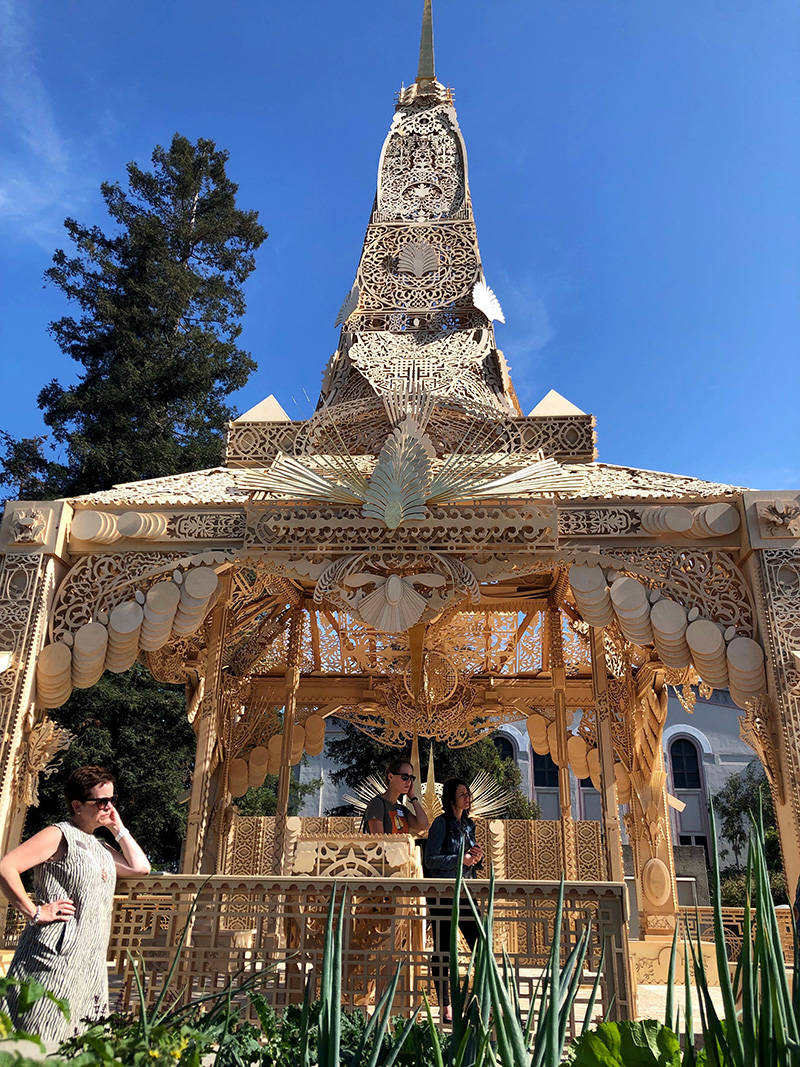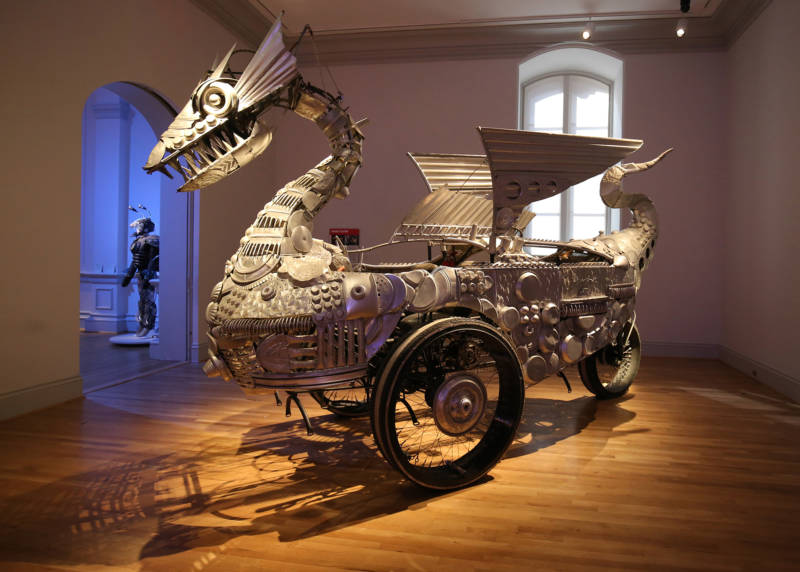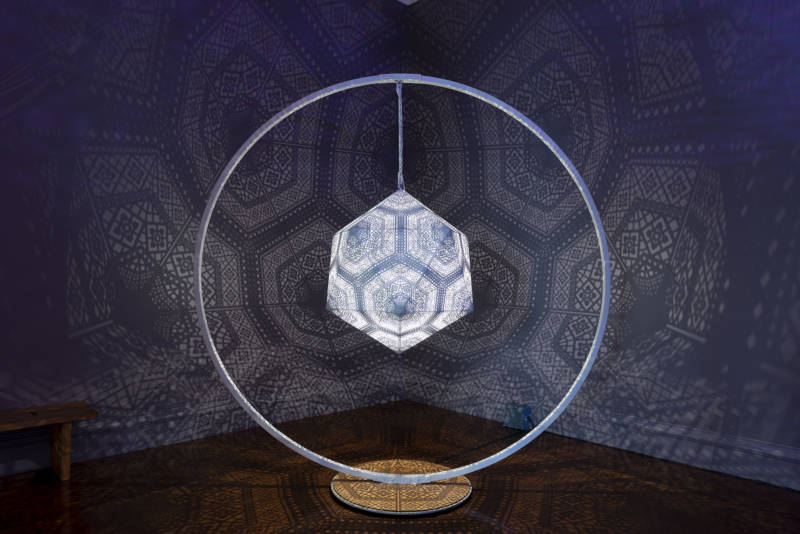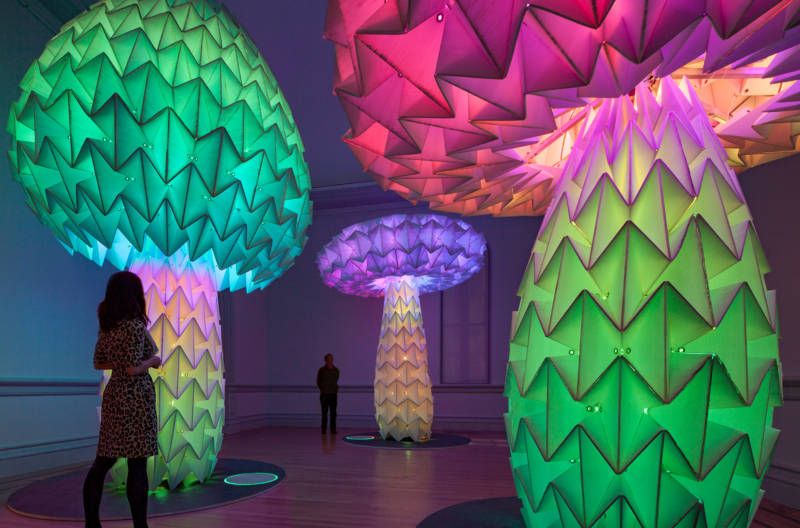Burning Man is a polarizing topic here in the Bay Area, where the arts and music festival was founded in 1986 at Baker Beach in San Francisco.
For some, it’s not just a yearly gathering, but an entire lifestyle—one that may or may not include a penchant for fire-twirling; a love for deep house and dubstep; and a uniform of top hats, goggles, faux fur and/or white dreads. Meanwhile, many who stay behind in the Bay Area during Burning Man week actually celebrate when all the Burners leave town for their annual pilgrimage to Black Rock City, Nevada, where the festival takes place every August.

Even if Burning Man rubs you the wrong way, the principles of the festival are ones most progressive people can get behind: radical self-expression, communal effort and civic responsibility, to name a few. But because of its execution—namely the fact that it costs thousands of dollars to attend when factoring ticket costs, vehicle passes, transportation, food and desert survival gear—it falls short on its professed ideal of “radical inclusion,” and attracts a mostly white, affluent audience, including a growing number of Silicon Valley tech elite. (In 2018, Burning Man reported that the median household income of attendees was $101,700, and that 76 percent of them were white.)
No Spectators: The Art of Burning Man, a new exhibit at Oakland Museum of California, aims to bring out the best in Burning Man’s utopian vision, and allow laypeople to see some of its most impressive installation art without spending an entire paycheck, or several, to go to the Playa. In this final stop of a touring exhibition organized by the Smithsonian American Art Museum’s Renwick Gallery, the show celebrates Burning Man’s important place as a catalyst of maker culture and industrial arts, but ultimately leaves cultural analysis to be desired.
In the museum courtyard outside the main gallery space, an elaborate wooden temple by David Best—clearly inspired by Southeast Asian Buddhist architecture—replicates the elaborate, ephemeral structures he annually creates at Burning Man. Called Temple of Reunion, the piece invites museum-goers to write homages to lost loved ones on its wooden blocks. In the desert, Best’s temples are burned at the end of the week in a cathartic ritual.
Within the gallery, Gamelatron Bidadari, a sound installation by Aaron Taylor Kuffner, features mechanized Indonesian gongs that ring out in calming, meditative tones. The skilled craftsmanship and visual appeal of Temple of Reunion and Gamelatron Bidadari are undeniable, and they are some of the most beautiful pieces in the exhibit. Both by white artists, these pieces nevertheless over-rely on Eastern religious aesthetics, removing their cultural significance by placing them in the drug-fueled spectacle of the Playa (and now its homage in the museum).
It’s precisely this casual attitude towards cultural appropriation—and the ways Burners consume non-white aesthetics at an event largely bereft of people of color—that makes the disconnect between Burning Man and its utopian principles off-putting to many, including at least one artist in the exhibit itself.

“I have a little bit of a cognitive dissonance going on with Burning Man,” says Rachel Sadd (a.k.a. Rachel McCrafty), a Bay Area artist who created an interactive piece for the exhibit called Gift-o-Matic, where viewers can make necklaces and origami butterflies to put in a giant gumball machine for others to take home. “The amazing, life-changing experiences, the art, the desert sun, the challenges, the things I learn about myself—things I love. Things I don’t love? So much effort, resources, thought and passion are put together to express the voice of a single group of artists—white men—to a singular audience: predominantly white people.”
Even with these ongoing conversations within and outside of the Burning Man community, the show is populated with placards touting Burning Man’s activist-sounding ideals, with little thought to whether the festival lives up to its stated principles. Walking through it, I wished that—like many OMCA shows have skillfully done (most recently, Queer California)—it would have made a greater effort to realistically examine the festival’s broader social context.
An adjoining smaller exhibition, City of Dust: The Evolution of Burning Man, organized by the Nevada Museum of Art, does little to examine how Burning Man’s reputation at large transformed from an anarchist hippie gathering to a playground for the rich, instead displaying early flyers and photos from Burning Man’s Baker Beach days. There’s also little information about music at Burning Man, which has coalesced into its own subgenre, and how the festival is now regarded as an electronic dance music (EDM) destination. With high-profile acts like Diplo and Flume performing in recent years, Burning Man’s EDM aspect certainly adds to a mainstream, commercial appeal largely unmentioned in the exhibit.

Without this context, No Spectators does a good job inspiring its audience to want to believe in Burning Man’s ideals through sheer eye candy. A bus converted into a silent movie theater—complete with a ticket window and seating—by the 150-person collective Five Ton Crane attests to the impressive teamwork and trust that Burners tap into to make the event possible.
Shrumen Lumen, two glowing, LED-lit mushrooms by FoldHaus Art Collective, convey an otherworldly, magical atmosphere. And works like HYBYCOZO’s Inner Orbit: Lvov and Trocto—two hanging, steel geometric sculptures with intricate laser-cut patterns casting dazzling shadows—speak to Burning Man artists’ embrace of emerging fabrication technologies.
Still, as much as Burning Man professes to be a radical, intentional utopia that exists parallel to our materialistic, detached society, no art exists in a vacuum. And without the right social context, No Spectators reads as a surface-level celebration of a cultural phenomenon with so many other angles worthy of exploration.

No Spectators: The Art of Burning Man is on view at Oakland Museum of California through Feb. 16, 2020. Details here.


